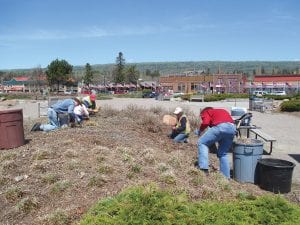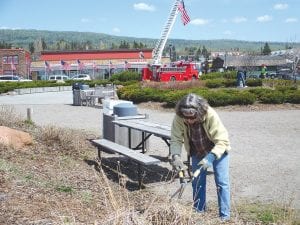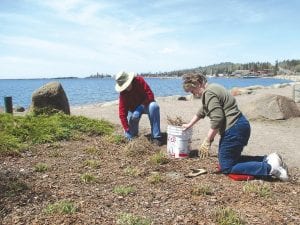The Cook County Garden Club was very busy on Memorial Day, May 26. Club members gathered at Harbor Park in downtown Grand Marais to weed and trim the flowerbeds gracing the park. Sixteen people came out to work under sunny skies on Memorial Day. Garden Club President Frances Jarchow said people worked in the park for three hours. She said, “They worked really hard. They did a fantastic job!”

Although the Minnesota Department of Natural Resources (DNR) lifted burning restrictions across the state on May 23, including in Cook County, residents and visitors should still be aware of weather and wind conditions before having a campfire or burning brush.
The DNR lifted the restrictions due to decreased fire danger because of wet conditions and green up moving northward. However, the public is reminded that conditions can change quickly.
The DNR advises people to follow open burning laws and regulations. Those seeking to burn brush or vegetative debris need to obtain a burning permit available through state and federal forestry offices or from local fire wardens. These officials can tell you if burning is—or is not—permitted.
Burning permits can also be obtained online by paying a $5 fee per calendar year. Online permits need to be activated on the day of the burn. To obtain an online permit, visit: http://webapps1.dnr.state.mn.us/burning_ permits/.
The DNR advises anyone doing burning to keep burn piles small, have a water supply nearby, and stay with the fire until it is completely out. If the fire escapes, the homeowner is responsible for the damage and suppression costs.
No permit is required for campfires, which are defined as a fire set for cooking, warming or ceremonial purposes that is not more than three feet wide or three feet high, and has the ground five feet from the base of the fire cleared of all combustible material.
Caution must still be used with campfires, however. It is best to burn only after 6 p.m. and to make sure the fire is “dead out” and doused with water before leaving it.
Officials also reiterate that fire conditions may change quickly. At press time the DNR fire danger for the Arrowhead region was “high.” High fire condition means that fires start easily and spread at a fast rate.
For more information and maps, and to check fire conditions, see www.dnr.state.mn.us/forestry/fire/firerating_restrictions.html.




Loading Comments